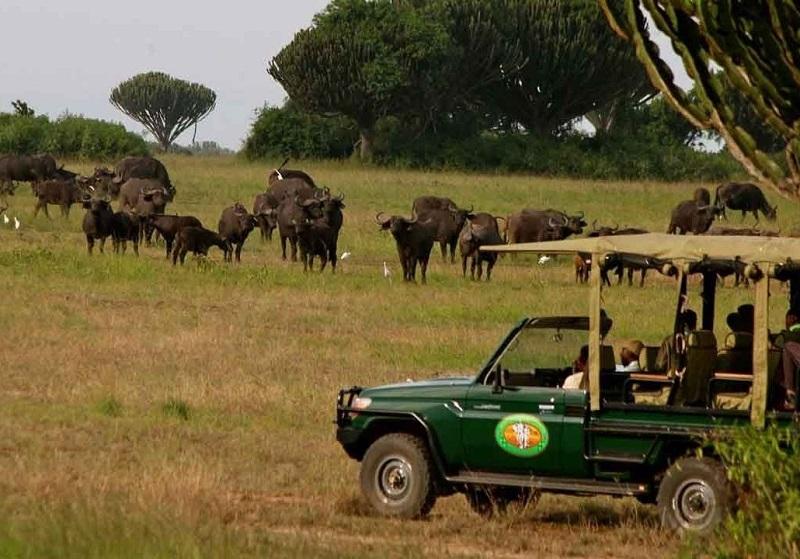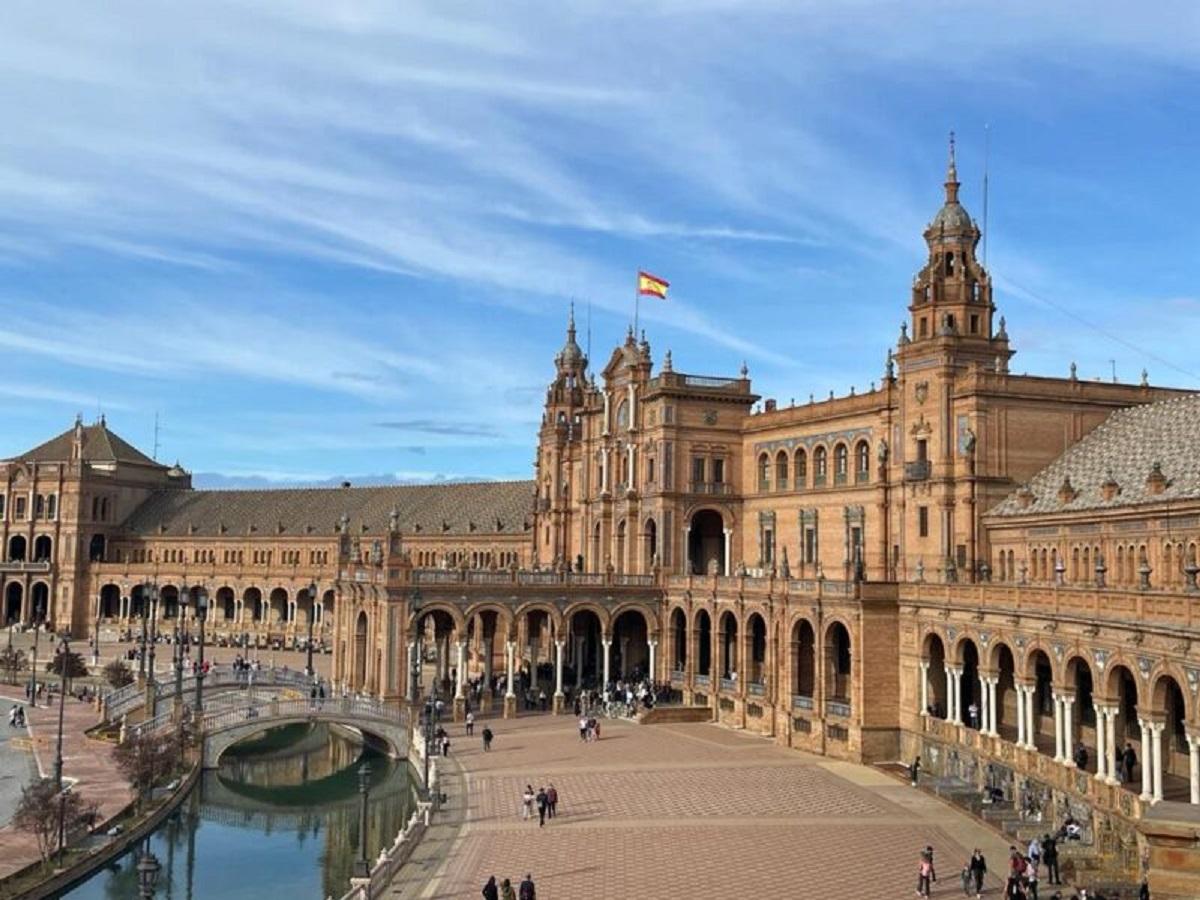Guide to Queen Elizabeth: Home to Tree-climbing Lions
Found in southwestern Uganda, Queen Elizabeth National Park is one of the country’s most popular and diverse conservation areas. Spanning over 1,978 square kilometers, the park is renowned for its rich biodiversity, scenic landscapes, and unique wildlife experiences. These include tree-climbing lions and the famous Kazinga Channel.
It is not only one of Uganda’s most popular national parks but also one of the most diverse in Africa, offering visitors a unique blend of wildlife experiences. This guide will provide everything you need to know for an unforgettable visit to Queen Elizabeth National Park.
Overview of Queen Elizabeth National Park
Queen Elizabeth National Park is situated between Lake George and Lake Edward, connected by the Kazinga Channel. The park has a variety of ecosystems, including savannas, forests, wetlands, and lakes, supporting a wide array of flora and fauna. The park is named after Queen Elizabeth II and is a significant part of the greater Albertine Rift, a region known for its high levels of endemism and biodiversity.
Wildlife in Queen Elizabeth National Park

Queen Elizabeth National Park is renowned for its remarkable variety of mammals. Lions are one of the main attractions, particularly the unique tree-climbing lions found in the Ishasha sector. These lions exhibit a rare behavior of resting in fig trees, providing a captivating sight for visitors.
Elephants are another prominent feature of the park, with large herds roaming across the savannas and congregating near water sources. The park is also home to a significant population of hippos, especially along the Kazinga Channel, where they can be seen in large pods. Buffalo herds are frequently encountered, often grazing in the open grasslands, while leopards, though elusive, are occasionally spotted in the woodlands.
The graceful Uganda Kob, an elegant antelope species, is commonly seen throughout the park. The park has over 600 bird species, making it one of the most diverse avian habitats in Africa. Iconic birds such as the African Fish Eagle, with its distinctive call, are a common sight along the Kazinga Channel.
Flamingos are another highlight, particularly around the saline crater lakes like Lake Katwe, where they gather in large numbers. Nile Crocodiles are a common presence in the waters of the Kazinga Channel, often seen basking on the banks or swimming in the channel.
The park’s wetlands and forested areas are also home to a range of other reptiles, including various species of snakes and lizards. This rich biodiversity makes Queen Elizabeth National Park a compelling destination for nature lovers and wildlife photographers, offering a chance to observe a wide array of species in their natural environment.
The Best Time to Visit Queen Elizabeth National Park
Queen Elizabeth National Park offers great wildlife viewing opportunities throughout the year, but certain seasons are particularly favorable. The dry season, from June to September and December to February, is the best time for game viewing. During these months, animals gather around water sources, making them easier to spot.
The dry season also offers ideal conditions for boat cruises on the Kazinga Channel and game drives in the park’s various sectors. The wet season, from March to May and October to November, brings lush, green landscapes and a wealth of birdlife, including migratory species.
While the roads can become muddy and some tracks may be challenging to navigate, this season offers fewer tourists and a more serene experience. The wet season is also an excellent time for chimpanzee trekking in the Kyambura Gorge.
Getting to Queen Elizabeth National Park from Kampala

The most common way to reach Queen Elizabeth National Park from Kampala is by road. The park is approximately 400 kilometers (about 249 miles) southwest of Kampala, and the journey typically takes around 7 to 8 hours. The drive offers scenic views of Uganda’s countryside, passing through towns such as Mbarara and Kasese.
For a quicker and more convenient option, flights are available from Entebbe International Airport near Kampala to airstrips near the park, such as Mweya and Kasese. The flight takes about 1 to 1.5 hours, offering breathtaking aerial views of the Ugandan landscape. From the airstrips, visitors can easily access various parts of the park.
Other Activities in Queen Elizabeth National Park
Game drives are the primary way to explore Queen Elizabeth National Park’s diverse landscapes and wildlife. The park offers several game drive circuits, including the Mweya Peninsula, Kasenyi Plains, and Ishasha sector. Each area provides unique wildlife viewing opportunities, from herds of elephants and buffalo to the famous tree-climbing lions of Ishasha.
A boat safari on the Kazinga Channel is a highlight of any visit to the park. The channel connects Lake George and Lake Edward and is teeming with wildlife, including hippos, crocodiles, and a variety of bird species. Boat cruises offer an up-close experience with these animals and provide excellent photographic opportunities.
Chimpanzee trekking in the Kyambura Gorge, also known as the “Valley of Apes,” is a unique experience in Queen Elizabeth National Park. Guided treks take visitors into the lush rainforest to observe these intelligent primates in their natural habitat. The gorge is also home to other wildlife, including various monkey species and birds.
With over 600 bird species, Queen Elizabeth National Park is a paradise for birdwatchers. The park’s diverse habitats, from wetlands to savannas, support a wide range of birdlife. Key birding spots include the Kazinga Channel, the Maramagambo Forest, and the crater lakes area, where flamingos are often seen.
Park Fees for Queen Elizabeth National Park

Visiting Queen Elizabeth National Park requires payment of various fees, which contribute to the conservation and management of the park. As of 2024, the fees are as follows:
- Park Entrance Fee: USD 40 per adult per day for foreign non-residents, USD 30 per adult per day for foreign residents, and UGX 20,000 per adult per day for East African citizens.
- Chimpanzee Trekking Permit: USD 50 per person for foreign non-residents, USD 40 per person for foreign residents, and UGX 150,000 for East African citizens.
These fees are subject to change, so it is advisable to check with the Uganda Wildlife Authority (UWA) or your tour operator for the most current rates.
FAQs: Touring Queen Elizabeth National Park
Do I Need a Car to Tour the Park?
Yes, having a car is essential for touring Queen Elizabeth National Park. The park’s large size and varied landscapes are best explored by vehicle, allowing access to different areas for game viewing, boat cruises, and other activities. Most visitors either rent a 4×4 vehicle or book guided tours through safari operators.
Are Unguided Walks Allowed in the Park?
No, unguided walks are not allowed in Queen Elizabeth National Park for safety reasons. The park is home to dangerous wildlife, including lions, elephants, and buffalo. Guided walks are available in designated areas and are conducted by experienced rangers who ensure safety and provide informative insights into the park’s flora and fauna.
How Much is a Game Drive in the Park?
The cost of a game drive in Queen Elizabeth National Park varies depending on the type of accommodation, the duration of the drive, and whether it is a shared or private experience. On average:
- Shared Game Drives: Typically cost between USD 30 to USD 100 per person for a half-day game drive.
- Private Game Drives: Can range from USD 150 to USD 300 per vehicle for a half-day game drive, depending on the level of luxury and exclusivity.
Many lodges and camps offer game drives as part of their all-inclusive packages, providing good value for visitors.
Conclusion
Queen Elizabeth National Park offers a rich blend of wildlife and landscapes, making it a must-visit destination in Uganda. Whether you’re on a game drive, a boat safari, or a chimpanzee trek, the park provides unforgettable experiences and lasting memories.





